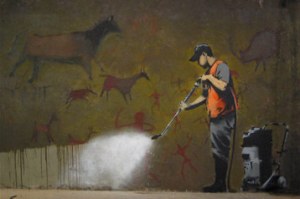What started this line of thought was my recent post about prehistoric cave art. Neurologist Oliver Sacks has suggested that perhaps some cave art was inspired by visual hallucinations resulting from by sight loss.
This is just one of a number of theories. Others include
- the artists had consumed hallucinogenic substances
- the paintings are sympathetic magic: for example, by painting a wild horse being speared the artists may have hoped to make that come true
- the animals are totems, depictions of the spirit ancestors of the tribe
- the paintings are part of religious ritual, like animal gods in ancient Egypt
- the paintings are shamanistic and the artists had danced themselves into an altered state of consciousness.
These have all been seriously proposed and I take them seriously. But I’m skeptical. I just don’t think we have enough evidence to believe them or that we need such complex explanations. We ought to accept the simplest one that fits the given facts and here I would go for cave paintings being a mixture of story and decoration. In fact they remind me of graffiti.
In the part of the world where I live there are many ancient churches built of a very soft limestone, easy to scratch pictures on. And if you visit these churches you often find graffiti. Other old buildings worldwide have graffiti of course, but I just happen to know more about this graffiti because I was once a sort of collector of it.
This medieval church graffiti is partly what people wanted to say something about: an earthquake, the Black Death, St Paul’s cathedral London before the Great Fire, their relationships
‘Barbara filia Barbara est’ (‘Young Barbara is a barbarian’)
And it’s partly geometric decoration. The church masons must have got bored from time to time, maybe during meal breaks, and they had their tools handy. So they drew patterns on the masonry. Here’s a motif found almost everywhere.
It’s been claimed this is a talisman against the evil eye: word apotropaic as it’s called. But if you’ve ever had a pair of compasses, a sheet of paper, and an idle moment then I bet you’ve drawn this daisy wheel and never thought of the evil eye. So I’m not convinced about this either.
A deeper question though, and one that does hint at a neurological connection, is why we find decorations appealing. Does our visual system have geometry built in?
Credit
The spray cleaning graffito is by Banksy and was originally on a wall in Leake Street London. The image is from Bootic, where ironically you can buy a canvas print of the wall to hang on your wall.



